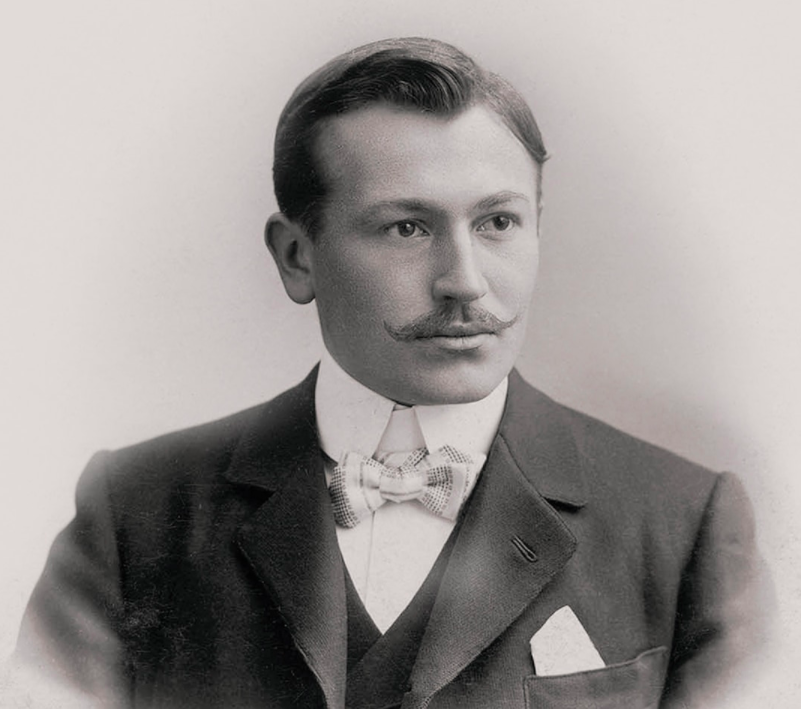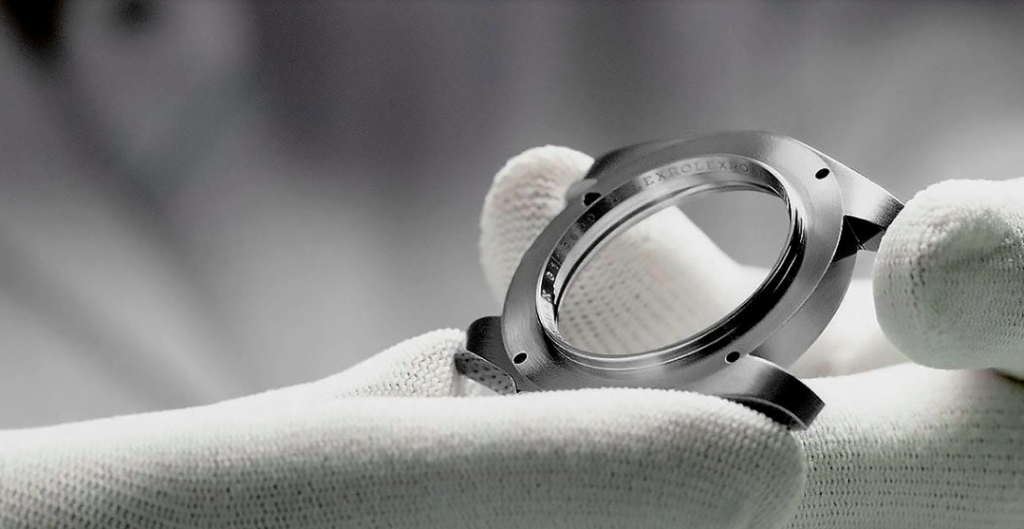
From rich celebrities to the most famous U.S. presidents, the Rolex watch has made an appearance on the wrist of those with the highest of statuses in the world for decades. Featured on the left in a Rolex Daytona is Jay Z, one of the most influential hip-hop artists in history. Known as one of the top luxury watches to exist, the Rolex watch gives its wearer the utmost status of wealth and prestige. This legendary brand of watch has a modest entry level price of $5,000 and maxes at the most expensive sale of $17.8 million. With a price that high, it is apparent that the function of such a watch goes beyond its ability to tell time. How did Rolex get to the point where their watches are reaching prices into the millions? Lets take a look into where it all began: Rolex’s founder, Hans Wilsdorf.
A Brief Timeline

1905
- At the age of 24, Hans Wilsdorf founded ‘Wilsdorf & Davis’, a company that distributed time pieces in the early 20th century. He dreamt of one day creating a watch worn on the wrist. At the time, wrist watches were not very popular as they were not precise nor considered elegant, however, Wilsdorf forsaw that they could become both in the near future. He put his dreams into action and worked on equipping his timepieces with very small, precise movements.
1908
- Three years later, Wilsdorf created the iconic name ‘Rolex’. His intention was to create a word that would look good on his watches and would be easy to say and remember in any language. Rolex is in fact not a word in any language; Wilsdorf created it by combining letters of the alphabet over and over until something sounded right to him. A few days after stringing together the word ‘Rolex’, Hans Wilsdorf filed the brand name Rolex and officially registered it in Switzerland.
1910
- A Rolex watch was the first wristwatch in the world to receive the Swiss Certificate of Chronometric Precision.
1918
- Hans Wilsdorf moved Rolex to Geneva, Switzerland which is renowned internationally for watchmaking. Since then, Rolex watches have been made exclusively in Switzerland.
Throughout the rest of the 20th century, Rolex quickly gained more and more recognition for their impeccable innovations that went way beyond telling time. They went on to create watches that sustained deep-sea diving, aviation, mountain climbing, and scientific exploration. Although hard to pinpoint, Rolex started going the luxury route somewhere between the 1960s and 1980s. It was inevitable that Rolex went on to become known as one of the top luxury watch brands in the world, and miraculously, they have been able to maintain that status to this day.
So what makes the Rolex watch so expensive?
Rolex’s ability to price their watches at such high amounts can be attributed to the following:
- High in-house development costs
- The phenomenon of conspicuous consumption
- Effective advertisement techniques in luxury branding
A look into the creation of a Rolex
The creation of a Rolex is so private, they are made exclusively in Geneva, Switzerland in only four manufacturing facilities. The materials needed to make one are essentially all made in-house and include:
- 904L Stainless Steel (aka. “Oystersteel”)
- Gold
- Rolesor
- Cerachrom
- Mother of Pearl
As a pioneer in the watch industry, Rolex coins their own terms for some of their own materials such as “oystersteel” and “rolesor” which is a combination of gold and steel. Although it is known that Rolex produces some of their own materials such as their oystersteel, there is much mystery surrounding where Rolex receives some of their other raw materials from, such as their gold, which is all part of their mysterious, magical ambience. The base materials of a Rolex are quite expensive which is just one reason why Rolex watches are priced so high. What is so special about their materials? Let’s take a deeper dive into their special oystersteel that they are so widely known for.
Oystersteel

Rolex was the first to use 904L stainless steel (aka “oystersteel”) in their steel timepieces. This steel superalloy is highly resistant to corrosion and allows for a brighter polish sheen and luster than Rolex was previously able to do. The durability of a Rolex is one aspect that makes them so special and sets them apart from other watches as most other watchmaking companies use a stainless steel grade 316L. Needless to say, it is assumed Rolex’s other materials are of the highest qualities as well. The use of high quality materials and the fact that all watches are hand-crafted allows Rolex to have such a high starting price for their watches.
Conspicuous Consumption

Although Rolex watches are made from expensive materials, the fact of the matter is the materials aren’t that expensive for Rolex to be selling watches for tens to hundreds of thousands of dollars. Materials aside, the real reason the Rolex watch is expensive is because what’s being sold goes beyond the physical watch. When people purchase a Rolex, they are participating in conspicuous consumption. Conspicuous consumption is a term used in economics that was coined by American sociologist and economist Thorstein Veblen. It describes the phenomenon of purchasing items in an effort to display wealth. It is primarily associated with wealthy people, however, anyone can be considered a conspicuous consumer. Purchasing a Rolex, in essence, is purchasing the image of prestige, wealth, and sophistication. Most people cannot afford such an expensive watch, so those who purchase and wear them stand out from the rest of society and call attention to themselves for their assumed high social status and wealth.
How does Rolex make people want their watches?
In other words, how does Rolex effectively market itself as luxury?
According to Millenary Watches, Rolex has been able to brand themselves as luxury for two reasons: their marketing and their design and technological innovation. Rolex has effectively created an image of their brand that conveys the notion of ‘making it’ in life. To do this, Rolex features their luxurious watches in ads on some of the world’s most famous and successful men including: Tiger Woods, Roger Federer, Marlon Brando, Robert DeNiro, Pablo Picasso, Martin Luther King, Elvis Presley, Dwight Eisenhower and Sir Jackie Stewart. Furthermore, their impressive aesthetic and design quality (which Rolex captures greatly in marketing ads) make Rolex watches all the more desirable. As far as design and technological innovations, Rolex is constantly improving their watches in both quality and design. This allows Rolex to increase the value of their watches, which makes them less obtainable. By making them less obtainable, this increases the prestige, luxury, and desirability of a Rolex watch since it is just human nature to want things that are highly exclusive.
Marx’s Commodity Fetishism and Theory of Value
The “magic” of a Rolex watch that I referred to earlier can be explained using Karl Marx’s theories of commodity fetishism and value. Commodity fetishism is the phenomenon whereby objects are attributed magic “phantom-like” qualities in a such a way that the labor that went into making the object is lost once the object is only associated with a certain monetary value for exchange. According to Marx theory, once an object becomes a commodity, it is “fetishized”. In other words, people come to believe that the object has intrinsic value in and of itself. Most people fail to stop and think about where the actual materials for such luxury items are coming from and who is working to dig up these materials. Gold and silver, two of Rolex’s core materials, come from deep within Earth and have to be extracted via excavation. Just to put things in perspective, Rolex is a multi-billion dollar company while the people digging their raw materials out from the ground make a measly 40k per year. According to Marx theory, the value of an object comes from it being a commodity, rather than it coming from the labor that actually went into its production. Through my investigation into the luxurious Rolex watch, it has become obvious that under capitalism, the labor that goes into the production of many objects is severely undervalued.
Sources
“17 Most Expensive Rolex Watches: The Ultimate List (2021 Updated).” Luxe Digital, 2 Feb. 2021, luxe.digital/lifestyle/style/most-expensive-rolex/.
Danao, Monique, et al. “How Rolex Remains One Of The World’s Most Valuable Brands.” Word-of-Mouth and Referral Marketing Blog, 21 July 2020, www.referralcandy.com/blog/rolex-marketing-strategy/.
Fierberg, Emma. “Why Rolex Watches Are so Expensive.” Business Insider, Business Insider, 29 June 2018, www.businessinsider.com/why-rolex-watches-expensive-price-submariner-daytona-datejust-2018-6.
“The History of Rolex, from 1905 to 1919.” Rolex, 2021, www.rolex.com/about-rolex-watches/1905-1919.html.
“Marx’s Commodity Fetishism and Theory of Value.” @TheSocyCinema, www.thesociologicalcinema.com/videos/marxs-commodity-fetishism-and-theory-of-value.
“When Did Rolex Become a Luxury Brand?” Millenary Watches, 15 Mar. 2020, millenarywatches.com/rolex-become-luxury-brand/#:~:text=Two%20things%20have%20contributed%20to,the%20design%20and%20technical%20innovation.&text=This%20includes%20innovations%20such%20as,perpetual%20rotor%2C%20and%20much%20more.